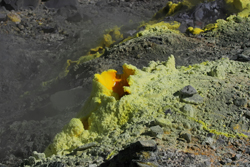Volcanic weathering - effect on the global climate
Volcanic ash and lava undergo chemical weathering much faster when newly erupted. This results in a change in their own chemical composition, often leading to the eventual release of dissolved elements into the ocean. It is thought that this process causes the ocean to draw CO2 out of the atmosphere, thereby cooling the planet. The EU-funded VOLCANIC WEATHERING project sought to quantify the quicker weathering of two types of newly erupted volcanic rock. Combining laboratory experiments and field observations’ data should enable modelling of volcanic weathering effects on the global climate. Initially, the study was limited to Icelandic field sites and samples for laboratory experiments. It was later expanded to include river sediments from around the world. Researchers examined the behaviour of chemical elements from volcanic deposits upon their arrival in coastal and estuarine waters. The dissolution of particulate material upon arrival in seawater was found to be a key component of global element cycles such as carbon and oxygen. Human activities, like dam building, deforestation and practices inducing erosion, have reduced the effects of volcanic weathering on seawater chemistry. This has resulted in incorrect quantification of CO2 removal from the atmosphere from biological and weathering activities. These errors could have adverse consequences in areas like climate monitoring, ecosystem management, fish reserves, land use, river management and pollution dispersion.







